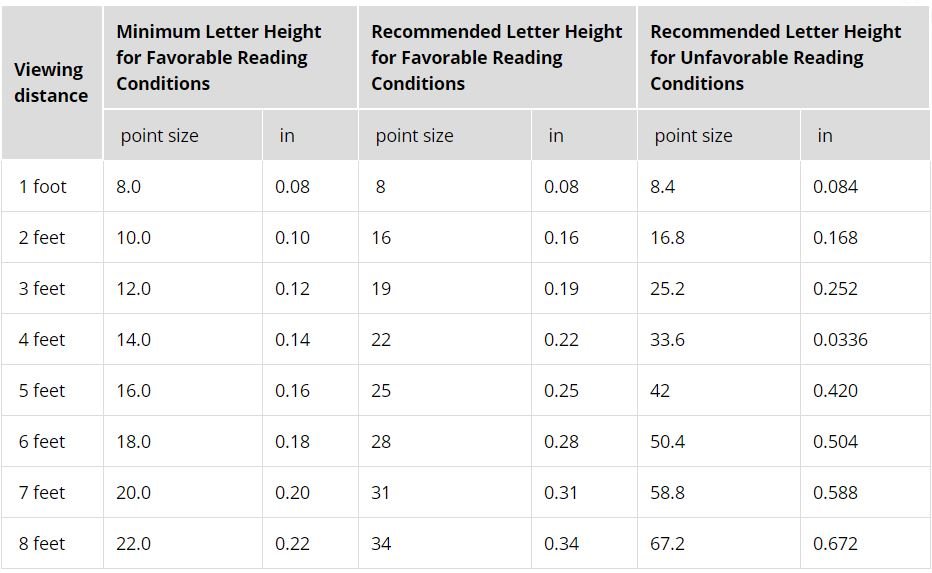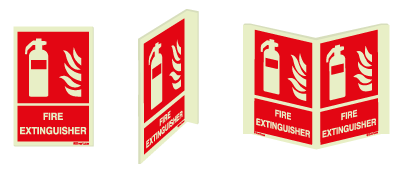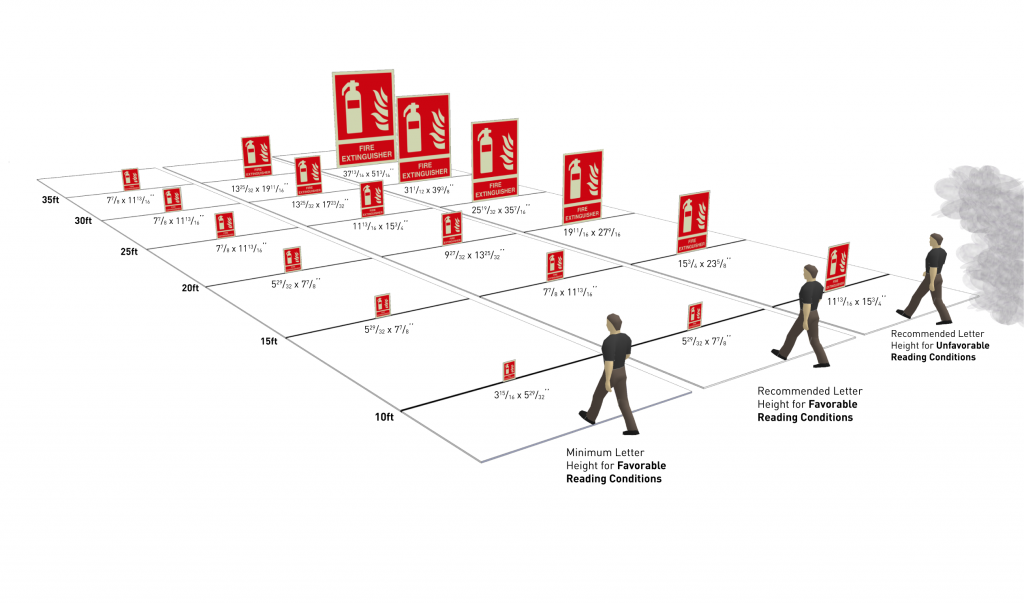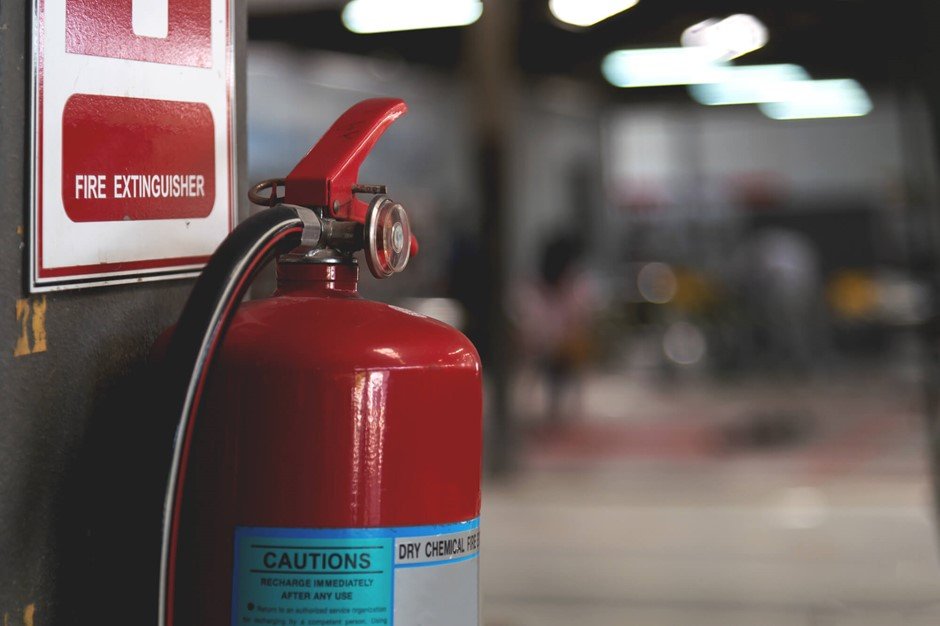The benefits of using safety grade Photoluminescent Fire Safety Signs
The use of Fire Safety Signs is required by several standards and codes such as OSHA, NFPA 170, and the International Fire Code.
Fire Safety Signs are used for the purpose of informing building users and the fire department teams on the location of fire-fighting and fire alarm equipment such as fire extinguishers, fire hose reels, risers, valves, and fire alarm pull stations.
To assure that the Fire Safety Signs used in your buildings will be effective during normal operational times but most importantly during an emergency, several factors should be taken into consideration. Therefore, selecting the right size, type, location, and material for the construction of Fire Safety Signs may be vital in providing a safe environment and reducing risk in your facilities.
To choose the right size of Fire Safety Signs, these should be selected in accordance with their intended maximum viewing distance. ANSI Z535.2 establishes the relationship between letter size used on supplementary texts and the sign’s safe viewing distance. The table below shows ANSI’s Minimum Letter Height and its respective Minimum Safe Viewing Distance both under Favorable and Unfavorable Reading Conditions.

In the following graph, we apply the Minimum Letter Height rules to the Fire Extinguisher sign showing the size of the sign required to comply with its intended Safe Viewing Distance.
Deciding on the appropriate type of sign is also very important and you can select from a variety of shapes being the most common the Type 1, Type 2, and Panoramic signs:

Type 1 signs are signs that are meant to be installed parallel to the wall. These are the most common type of signs used but keep in mind that these can only be seen from users who are standing directly towards them. Therefore, while these signs will offer a good solution for smaller areas there are better options for wider areas.
Type 2 signs are intended to be installed in a flag position and therefore will likely be the ideal solution for corridors as they will be easily viewed by occupants walking from both ends of the corridor.
Panoramic signs can be perceived from 180° angles and therefore will also be a good solution to identify the location of fire-fighting equipment signs in corridors and will be the best choice for wider zones in the facility as they can be located irrespectively from the user position in that area.
Choosing the right location for the installation of Fire Safety Signs should also take into consideration the intended maximum viewing distance for each sign and that situations, where the signs are obstructed from view, must be prevented. To achieve this, Fire Safety Signs should be installed at high-location:

The sign installed at the high-location level identifies the location of the fire-fighting equipment, in this case, a fire extinguisher, reducing the possibility of it being blocked by something or someone. These signs can be complemented with intermediate location signs that are to be installed at eyesight level and are intended to provide additional information to the user of the equipment. For example, fire extinguisher identification signs used at the intermediate level provide information on the type of extinguisher that the user is about to handle and the different classes of fires that it can be and that it cannot be used for.


Selecting the material for the construction of your Fire Safety Signs may be the most important decision in assuring that the signs will be effective when most needed – during an emergency! Even though as per ANSI Z535.2 situations other than the normal operating conditions should be considered those being power failure and emergency conditions, the majority of Fire Safety Signs used in the country are still made of non-photoluminescent materials. The reason is mainly due to cost, but this may prove to be counterproductive. In the event of a fire, the priority is to evacuate but one should be conscious of the importance that fire-fighting equipment may have even during evacuations as flames may block the egress path. Therefore, the use of Photoluminescent Fire Safety Signs can be decisive in identifying the location of fire extinguishers and other fire-fighting equipment under difficult conditions such as in the presence of smoke and blackout situations. In these cases, the swift identification of fire-fighting equipment will contribute to extinguish the flames and resume evacuation but can also contribute to extinguishing small fires that could otherwise turn in to uncontrolled blazes and be a threat to life safety as well as to the assets.
There are many Photoluminescent Fire Safety Signs available in the market. When choosing your Photoluminescent Fire Safety Signs keep in mind that not all photoluminescent signs will offer similar luminance performances and therefore you should inquiry your potential suppliers about the luminance performance of the signs that you are considering purchasing. To guarantee an effective luminance performance make sure that you select signs that comply with the luminance requirements of ASTM E2072, Standard Specification for Photoluminescent (Phosphorescent) Safety Markings, and ASTM E2073, Standard Test Method for Photopic Luminance of Photoluminescent (Phosphorescent) Markings.





